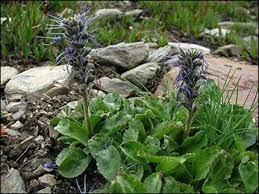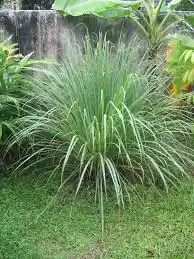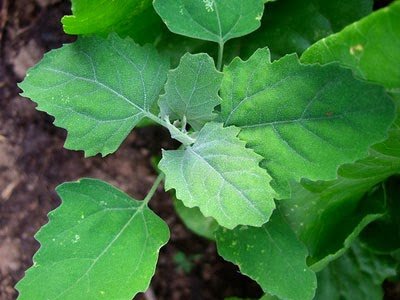Tulip Nutrition Requirements
Nutrition required by Tulip at each stage of its life cycle.
SOIL PREPARATION

Soil Preparation
Soil preparation is crucial for the successful growth of tulips.
Here's a step-by-step guide on soil preparation and nutrition requirements for tulips:
Soil Preparation Method:
1. **Choose the Right Location**: Select a location that receives full sun or partial shade. Ensure the area has well-draining soil to prevent waterlogging, which can cause bulb rot.
2. **Soil Testing**: Before planting, test the soil pH and nutrient levels. Tulips prefer slightly acidic to neutral soil with a pH range of 6.0 to 7.0. Amend the soil as needed to achieve the optimal pH.
3. **Clear the Area**: Remove any weeds, rocks, or debris from the planting area. Ensure the soil is loose and free of compacted spots.
4. **Amend the Soil**: Tulips thrive in well-draining soil rich in organic matter. Incorporate compost, well-rotted manure, or peat moss into the soil to improve its texture and fertility. Work the amendments into the top 12 to 18 inches of soil.
5. **Fertilization**: Apply a balanced slow-release fertilizer according to the soil test recommendations. Avoid using high-nitrogen fertilizers, as they can promote foliage growth at the expense of flower production.
Nutrition Requirements at Soil Preparation Stage:
1. **Nitrogen (N)**: Nitrogen is essential for healthy foliage growth. However, excessive nitrogen can lead to lush foliage and fewer flowers. Use a fertilizer with a balanced N-P-K (nitrogen-phosphorus-potassium) ratio, such as 10-10-10, to provide a moderate amount of nitrogen.
2. **Phosphorus (P)**: Phosphorus promotes root development and flower formation. Incorporate a phosphorus-rich fertilizer, such as bone meal or rock phosphate, into the soil during preparation to support healthy bulb and root growth.
3. **Potassium (K)**: Potassium helps improve disease resistance and overall plant vigor. Look for fertilizers with potassium sulfate or potassium nitrate to provide this essential nutrient.
4. **Micronutrients**: Tulips also require trace amounts of micronutrients like iron, magnesium, calcium, and sulfur for optimal growth. These micronutrients are often present in well-balanced fertilizers or can be supplemented separately if deficiencies are identified through soil testing.
5. **Organic Matter**: Organic matter, such as compost or aged manure, improves soil structure and provides a slow-release source of nutrients for tulips. Incorporating organic matter during soil preparation enriches the soil and supports healthy plant growth.
By following these soil preparation methods and providing the necessary nutrients, you can create an optimal growing environment for tulips, ensuring vibrant blooms and healthy plants. Remember to water the bulbs thoroughly after planting and mulch the soil surface to conserve moisture and suppress weed growth.
Early Growth (Germination to Establishment)

Early Growth
During the early growth stage of tulips, from germination to establishment, the nutritional needs of the plants are focused on supporting strong root development and healthy foliage growth.
Here are the key nutrition requirements for tulips during this stage:
1. **Nitrogen (N)**:
- Nitrogen is essential for promoting healthy leaf and stem development during the early growth stage.
- Use a nitrogen-rich fertilizer to provide a steady supply of this nutrient to support vigorous foliage growth.
- Avoid excessive nitrogen application, as it can lead to excessive foliage growth at the expense of bulb development and flowering.
2. **Phosphorus (P)**:
- Phosphorus plays a crucial role in promoting strong root development and overall plant establishment.
- Ensure an adequate supply of phosphorus to support healthy root growth, which is vital for anchoring the plants and absorbing water and nutrients from the soil.
- Incorporate phosphorus-rich fertilizers or organic amendments during soil preparation or apply them as a side dressing during early growth.
3. **Potassium (K)**:
- Potassium is important for enhancing disease resistance and improving overall plant vigor.
- Provide a balanced supply of potassium to support the development of sturdy stems and leaves, as well as to enhance the plant's ability to withstand stress factors.
- Use potassium-containing fertilizers or supplement with potassium sulfate or potassium nitrate as needed during early growth.
4. **Calcium (Ca)** and **Magnesium (Mg)**:
- Calcium and magnesium are essential secondary nutrients that contribute to overall plant health and development.
- Ensure an adequate supply of calcium and magnesium to prevent nutrient deficiencies and support optimal growth.
- These nutrients are typically present in well-balanced fertilizers or can be supplemented separately if deficiencies are identified through soil testing.
5. **Micronutrients**:
- Micronutrients such as iron, manganese, zinc, copper, boron, and molybdenum are essential for various biochemical processes in plants.
- While micronutrient deficiencies are less common than macronutrient deficiencies, they can still affect plant growth and development.
- Use micronutrient-rich fertilizers or apply micronutrient supplements according to soil test recommendations to ensure balanced nutrition during early growth.
6. **pH Balance**:
- Maintain the soil pH within the optimal range (slightly acidic to neutral, pH 6.0 to 7.0) to ensure proper nutrient availability to the plants.
- Monitor soil pH regularly and amend the soil as needed to prevent nutrient imbalances and deficiencies.
Providing the right balance of nutrients during the early growth stage is essential for establishing healthy tulip plants with strong roots and vigorous foliage, laying the foundation for successful flowering in subsequent stages of growth. Regular monitoring of plant growth and soil conditions, along with appropriate fertilization practices, will help ensure optimal nutrition for tulips during this critical stage.
Tillering Stage (Shoot Development)

Tillering Stage
Tillering stage, also known as shoot development stage, is a critical period in the growth of tulips where the plants focus on producing and elongating their shoots. During this stage, tulips have specific nutritional requirements to support healthy shoot development and prepare for the formation of flower buds.
Here are the key nutrition requirements for tulips during the tillering stage:
1. **Nitrogen (N)**:
- Nitrogen is essential for promoting vigorous shoot growth and leaf development.
- Provide a balanced supply of nitrogen to support healthy foliage growth and ensure the production of robust shoots.
- Apply nitrogen-rich fertilizers or organic amendments as needed to meet the plants' requirements during the tillering stage.
2. **Phosphorus (P)**:
- Phosphorus plays a crucial role in supporting root development and promoting overall plant vigor.
- Continue to supply an adequate amount of phosphorus to support the development of strong root systems, which is essential for anchoring the plants and absorbing nutrients from the soil.
- Incorporate phosphorus-rich fertilizers or apply phosphorus supplements during the tillering stage to ensure optimal growth.
3. **Potassium (K)**:
- Potassium is important for enhancing plant resilience to stress factors and promoting overall plant health.
- Provide a balanced supply of potassium to support the development of sturdy shoots and improve the plants' ability to withstand environmental stresses.
- Use potassium-containing fertilizers or supplement with potassium sulfate or potassium nitrate as needed during the tillering stage.
4. **Calcium (Ca)** and **Magnesium (Mg)**:
- Calcium and magnesium are essential secondary nutrients that contribute to overall plant growth and development.
- Ensure an adequate supply of calcium and magnesium to support shoot elongation and promote healthy foliage growth.
- These nutrients are typically present in well-balanced fertilizers or can be supplemented separately if deficiencies are identified through soil testing.
5. **Micronutrients**:
- Micronutrients such as iron, manganese, zinc, copper, boron, and molybdenum play crucial roles in various biochemical processes essential for plant growth.
- Ensure a balanced supply of micronutrients to support optimal shoot development and overall plant health.
- Use micronutrient-rich fertilizers or apply micronutrient supplements according to soil test recommendations to prevent deficiencies during the tillering stage.
6. **pH Balance**:
- Maintain the soil pH within the optimal range (slightly acidic to neutral, pH 6.0 to 7.0) to ensure proper nutrient availability to the plants during the tillering stage.
- Regularly monitor soil pH and adjust as needed to prevent nutrient imbalances and deficiencies that could affect shoot development.
By providing the right balance of nutrients during the tillering stage, you can support healthy shoot development in tulips, setting the stage for robust growth and flower production in subsequent stages of growth. Regular monitoring of plant growth and soil conditions, along with appropriate fertilization practices, will help ensure optimal nutrition for tulips during this critical stage.
Flowering

Flowering
During the flowering stage, tulips have specific nutritional requirements to support the development of healthy blooms and ensure optimal flower production.
Here are the key nutrition requirements for tulips during the flowering stage:
1. **Potassium (K)**:
- Potassium is crucial for promoting flower bud development, enhancing flower color, and improving overall flower quality.
- Provide a balanced supply of potassium to support the formation of sturdy flower stems and promote vibrant flower colors.
- Use potassium-containing fertilizers or supplement with potassium sulfate or potassium nitrate as needed during the flowering stage to enhance flower quality.
2. **Phosphorus (P)**:
- Phosphorus plays a vital role in flower formation and overall plant energy transfer processes.
- Continue to provide an adequate supply of phosphorus to support the development of healthy flower buds and promote robust flower growth.
- Incorporate phosphorus-rich fertilizers or apply phosphorus supplements during the flowering stage to ensure optimal flower production.
3. **Nitrogen (N)**:
- Nitrogen is essential for maintaining healthy foliage and supporting overall plant vigor during the flowering stage.
- Provide a moderate supply of nitrogen to support continued leaf growth and ensure the production of energy needed for flower development.
- Avoid excessive nitrogen application during the flowering stage, as it can lead to lush foliage growth at the expense of flower production.
4. **Calcium (Ca)** and **Magnesium (Mg)**:
- Calcium and magnesium play essential roles in flower development and overall plant health.
- Ensure an adequate supply of calcium and magnesium to support proper flower formation and prevent nutrient deficiencies that could affect flower quality.
- These nutrients are typically present in well-balanced fertilizers or can be supplemented separately if deficiencies are identified through soil testing.
5. **Micronutrients**:
- Micronutrients such as iron, manganese, zinc, copper, boron, and molybdenum are essential for various biochemical processes involved in flower development and coloration.
- Ensure a balanced supply of micronutrients to support optimal flower formation and enhance flower color and quality.
- Use micronutrient-rich fertilizers or apply micronutrient supplements according to soil test recommendations to prevent deficiencies during the flowering stage.
6. **pH Balance**:
- Maintain the soil pH within the optimal range (slightly acidic to neutral, pH 6.0 to 7.0) to ensure proper nutrient availability to the plants during the flowering stage.
- Regularly monitor soil pH and adjust as needed to prevent nutrient imbalances and deficiencies that could affect flower development and quality.
By providing the right balance of nutrients during the flowering stage, you can support healthy flower development and ensure optimal flower production in tulips. Regular monitoring of plant growth and soil conditions, along with appropriate fertilization practices, will help ensure optimal nutrition for tulips during this critical stage.
Matchuration & Ripening

Matchuration & Ripening
During the maturation and ripening stage of tulips, also known as the bulb development stage, the plant's focus shifts from flower production to bulb formation and maturation. Proper nutrition during this stage is crucial for the development of healthy bulbs that will ensure successful flowering in the following growing season.
Here are the key nutrition requirements for tulips during the maturation and ripening stage:
1. **Potassium (K)**:
- Potassium is essential for promoting bulb development, maturation, and storage of energy reserves.
- Provide a balanced supply of potassium to support the final stages of bulb growth and ensure proper bulb maturation.
- Potassium deficiency during this stage can result in underdeveloped bulbs with reduced vigor and flowering capacity.
2. **Phosphorus (P)**:
- Phosphorus plays a critical role in supporting bulb development, root growth, and energy transfer processes.
- Continue to provide an adequate supply of phosphorus to support the maturation of bulbs and enhance their energy reserves for the following growing season.
- Phosphorus deficiency during this stage can lead to poorly developed bulbs with reduced flowering potential.
3. **Calcium (Ca)** and **Magnesium (Mg)**:
- Calcium and magnesium are essential for maintaining bulb health and promoting proper bulb maturation.
- Ensure an adequate supply of calcium and magnesium to support the development of firm, healthy bulbs with good storage qualities.
- Calcium deficiency can result in bulb disorders such as tip burn, while magnesium deficiency can affect overall plant health and nutrient uptake.
4. **Micronutrients**:
- Micronutrients such as iron, manganese, zinc, copper, boron, and molybdenum play crucial roles in various biochemical processes involved in bulb development and maturation.
- Ensure a balanced supply of micronutrients to support optimal bulb formation, maturation, and storage.
- Micronutrient deficiencies during this stage can result in malformed bulbs or poor storage quality.
5. **pH Balance**:
- Maintain the soil pH within the optimal range (slightly acidic to neutral, pH 6.0 to 7.0) to ensure proper nutrient availability to the plants during bulb maturation.
- Regularly monitor soil pH and adjust as needed to prevent nutrient imbalances and deficiencies that could affect bulb development and storage quality.
By providing the right balance of nutrients during the maturation and ripening stage, you can support the development of healthy, well-formed bulbs with good storage qualities, ensuring successful flowering in the subsequent growing season. Regular monitoring of plant growth and soil conditions, along with appropriate fertilization practices, will help ensure optimal nutrition for tulips during this critical stage.
Harvesting

Harvesting
During the harvesting stage of tulips, proper nutrition and procedures are essential to ensure the bulbs are harvested at the right time and handled correctly for storage or propagation.
Here are the key nutrition requirements and procedures to follow during the harvesting stage for tulips:
Nutrition Requirements:
1. **Potassium (K)**:
- Potassium helps in the development of healthy bulbs and enhances their storage quality.
- Ensure a balanced supply of potassium throughout the growing season to support optimal bulb development.
- Adequate potassium levels contribute to firm bulbs with good storage potential.
2. **Phosphorus (P)**:
- Phosphorus is essential for bulb formation and maturation.
- Provide sufficient phosphorus during the growing season to support the development of well-formed bulbs.
- Phosphorus deficiency can result in underdeveloped bulbs with poor storage qualities.
3. **Calcium (Ca)** and **Magnesium (Mg)**:
- Calcium and magnesium contribute to bulb health and storage quality.
- Ensure an adequate supply of calcium and magnesium throughout the growing season to support proper bulb development.
- These nutrients help in the formation of firm bulbs with good storage potential.
4. **Micronutrients**:
- Micronutrients play important roles in various biochemical processes involved in bulb development and storage.
- Ensure a balanced supply of micronutrients to support optimal bulb formation and storage quality.
- Micronutrient deficiencies can affect bulb development and storage potential.
Harvesting Procedure:
1. **Timing**:
- Harvest tulip bulbs when the foliage begins to yellow and die back naturally.
- Avoid harvesting bulbs too early when they are still green, as they may not have completed the maturation process.
2. **Digging**:
- Use a garden fork or spade to carefully loosen the soil around the bulbs, taking care not to damage them.
- Lift the bulbs gently from the soil, shaking off excess dirt but avoiding excessive handling.
3. **Cleaning**:
- Remove any remaining soil from the bulbs by gently brushing or shaking them.
- Avoid washing the bulbs with water, as this can increase the risk of rot during storage.
4. **Curing**:
- Allow the harvested bulbs to cure in a cool, dry, and well-ventilated area for several days to allow the outer layers to dry and the bulbs to mature fully.
- Avoid exposing the bulbs to direct sunlight during curing, as this can cause them to dry out too quickly.
5. **Storage**:
- After curing, store the bulbs in a cool, dry, and well-ventilated location until they are ready for planting or further processing.
- Store the bulbs in mesh bags or crates to allow air circulation and prevent moisture buildup, which can lead to rot.
By following these nutrition requirements and procedures during the harvesting stage, you can ensure that tulip bulbs are harvested at the right time and handled correctly for storage or propagation, resulting in healthy bulbs with good storage qualities.
Tulip Farming Economics
Get details of Profitability and cost estimate in growing Tulip per acres of Land.
SOIL PREPARATION

Soil Preparation
Soil preparation is a crucial step in wheat cultivation, as it directly affects the crop's growth and yield. Here are the soil preparation methods and nutrition requirements at the soil preparation stage for wheat:
Soil Preparation Method:
Land Preparation: Plow the field to break the soil and turn it over. Use a disc harrow or cultivator to further break down clods and level the soil. Ensure proper seedbed preparation by creating a fine, well-tilled soil surface.
Seedbed Preparation: Level the field to provide a uniform surface for planting. Use a roller or a harrow to firm up the soil to facilitate seed-to-soil contact. Remove any weeds or crop residues from the previous season to reduce competition with the wheat crop.
Seed Rate and Sowing: Determine the appropriate seed rate based on the variety and local recommendations. Use a suitable seed drill for uniform and precise sowing. Ensure proper seed depth according to recommended guidelines.
Fertilization: Apply a balanced fertilizer based on soil nutrient analysis and regional recommendations. Incorporate fertilizers into the soil during seedbed preparation. Consider applying phosphorus and potassium along with nitrogen for optimal wheat growth.
Organic Matter: Incorporate well-rotted organic matter, such as compost or manure, into the soil. Organic matter enhances soil structure, water retention, and nutrient availability.
pH Adjustment: Check and adjust soil pH to the recommended range for wheat cultivation (typically around 6.0 to 7.5). Lime may be added to raise pH, and sulfur may be added to lower pH as needed.
Nutrition Requirement at Soil Preparation Stage: Nitrogen (N): Nitrogen is essential for vegetative growth and is crucial during the early stages of wheat development. Apply nitrogen fertilizer during soil preparation to provide an initial boost to the crop.
Phosphorus (P): Phosphorus is vital for root development and early plant establishment. Apply phosphorus-containing fertilizers, such as diammonium phosphate (DAP), during soil preparation.
Potassium (K): Potassium supports overall plant health, disease resistance, and drought tolerance. Apply potassium-containing fertilizers, such as potassium chloride (Muriate of Potash), during soil preparation.
Micronutrients: Consider incorporating micronutrients like zinc, copper, and boron based on soil testing results. Micronutrients play essential roles in enzyme activities and overall plant health.
Organic Matter: Organic matter contributes to nutrient availability and improves the soil's water-holding capacity. Ensure a good supply of organic matter through the incorporation of well-decomposed compost or manure.
Soil pH: Adjust soil pH to the recommended range for wheat cultivation to optimize nutrient uptake by the plants.
Microbial Activity: Encourage beneficial microbial activity in the soil by incorporating organic matter. Healthy soil microbial communities contribute to nutrient cycling and availability.
Water Management: Ensure proper drainage to prevent waterlogging, which can negatively impact nutrient uptake. Irrigate if necessary to maintain adequate soil moisture during wheat establishment.
Early Growth (Germination to Establishment)

Early Growth
Soil preparation is a crucial step in wheat cultivation, as it directly affects the crop's growth and yield. Here are the soil preparation methods and nutrition requirements at the soil preparation stage for wheat:
Soil Preparation Method:
Land Preparation: Plow the field to break the soil and turn it over. Use a disc harrow or cultivator to further break down clods and level the soil. Ensure proper seedbed preparation by creating a fine, well-tilled soil surface.
Seedbed Preparation: Level the field to provide a uniform surface for planting. Use a roller or a harrow to firm up the soil to facilitate seed-to-soil contact. Remove any weeds or crop residues from the previous season to reduce competition with the wheat crop.
Seed Rate and Sowing: Determine the appropriate seed rate based on the variety and local recommendations. Use a suitable seed drill for uniform and precise sowing. Ensure proper seed depth according to recommended guidelines.
Fertilization: Apply a balanced fertilizer based on soil nutrient analysis and regional recommendations. Incorporate fertilizers into the soil during seedbed preparation. Consider applying phosphorus and potassium along with nitrogen for optimal wheat growth.
Organic Matter: Incorporate well-rotted organic matter, such as compost or manure, into the soil. Organic matter enhances soil structure, water retention, and nutrient availability.
pH Adjustment: Check and adjust soil pH to the recommended range for wheat cultivation (typically around 6.0 to 7.5). Lime may be added to raise pH, and sulfur may be added to lower pH as needed.
Nutrition Requirement at Soil Preparation Stage: Nitrogen (N): Nitrogen is essential for vegetative growth and is crucial during the early stages of wheat development. Apply nitrogen fertilizer during soil preparation to provide an initial boost to the crop.
Phosphorus (P): Phosphorus is vital for root development and early plant establishment. Apply phosphorus-containing fertilizers, such as diammonium phosphate (DAP), during soil preparation.
Potassium (K): Potassium supports overall plant health, disease resistance, and drought tolerance. Apply potassium-containing fertilizers, such as potassium chloride (Muriate of Potash), during soil preparation.
Micronutrients: Consider incorporating micronutrients like zinc, copper, and boron based on soil testing results. Micronutrients play essential roles in enzyme activities and overall plant health.
Organic Matter: Organic matter contributes to nutrient availability and improves the soil's water-holding capacity. Ensure a good supply of organic matter through the incorporation of well-decomposed compost or manure.
Soil pH: Adjust soil pH to the recommended range for wheat cultivation to optimize nutrient uptake by the plants.
Microbial Activity: Encourage beneficial microbial activity in the soil by incorporating organic matter. Healthy soil microbial communities contribute to nutrient cycling and availability.
Water Management: Ensure proper drainage to prevent waterlogging, which can negatively impact nutrient uptake. Irrigate if necessary to maintain adequate soil moisture during wheat establishment.
Tillering Stage (Shoot Development)

Tillering Stage
Soil preparation is a crucial step in wheat cultivation, as it directly affects the crop's growth and yield. Here are the soil preparation methods and nutrition requirements at the soil preparation stage for wheat:
Soil Preparation Method:
Land Preparation: Plow the field to break the soil and turn it over. Use a disc harrow or cultivator to further break down clods and level the soil. Ensure proper seedbed preparation by creating a fine, well-tilled soil surface.
Seedbed Preparation: Level the field to provide a uniform surface for planting. Use a roller or a harrow to firm up the soil to facilitate seed-to-soil contact. Remove any weeds or crop residues from the previous season to reduce competition with the wheat crop.
Seed Rate and Sowing: Determine the appropriate seed rate based on the variety and local recommendations. Use a suitable seed drill for uniform and precise sowing. Ensure proper seed depth according to recommended guidelines.
Fertilization: Apply a balanced fertilizer based on soil nutrient analysis and regional recommendations. Incorporate fertilizers into the soil during seedbed preparation. Consider applying phosphorus and potassium along with nitrogen for optimal wheat growth.
Organic Matter: Incorporate well-rotted organic matter, such as compost or manure, into the soil. Organic matter enhances soil structure, water retention, and nutrient availability.
pH Adjustment: Check and adjust soil pH to the recommended range for wheat cultivation (typically around 6.0 to 7.5). Lime may be added to raise pH, and sulfur may be added to lower pH as needed.
Nutrition Requirement at Soil Preparation Stage: Nitrogen (N): Nitrogen is essential for vegetative growth and is crucial during the early stages of wheat development. Apply nitrogen fertilizer during soil preparation to provide an initial boost to the crop.
Phosphorus (P): Phosphorus is vital for root development and early plant establishment. Apply phosphorus-containing fertilizers, such as diammonium phosphate (DAP), during soil preparation.
Potassium (K): Potassium supports overall plant health, disease resistance, and drought tolerance. Apply potassium-containing fertilizers, such as potassium chloride (Muriate of Potash), during soil preparation.
Micronutrients: Consider incorporating micronutrients like zinc, copper, and boron based on soil testing results. Micronutrients play essential roles in enzyme activities and overall plant health.
Organic Matter: Organic matter contributes to nutrient availability and improves the soil's water-holding capacity. Ensure a good supply of organic matter through the incorporation of well-decomposed compost or manure.
Soil pH: Adjust soil pH to the recommended range for wheat cultivation to optimize nutrient uptake by the plants.
Microbial Activity: Encourage beneficial microbial activity in the soil by incorporating organic matter. Healthy soil microbial communities contribute to nutrient cycling and availability.
Water Management: Ensure proper drainage to prevent waterlogging, which can negatively impact nutrient uptake. Irrigate if necessary to maintain adequate soil moisture during wheat establishment.
Flowering

Flowering
Soil preparation is a crucial step in wheat cultivation, as it directly affects the crop's growth and yield. Here are the soil preparation methods and nutrition requirements at the soil preparation stage for wheat:
Soil Preparation Method:
Land Preparation: Plow the field to break the soil and turn it over. Use a disc harrow or cultivator to further break down clods and level the soil. Ensure proper seedbed preparation by creating a fine, well-tilled soil surface.
Seedbed Preparation: Level the field to provide a uniform surface for planting. Use a roller or a harrow to firm up the soil to facilitate seed-to-soil contact. Remove any weeds or crop residues from the previous season to reduce competition with the wheat crop.
Seed Rate and Sowing: Determine the appropriate seed rate based on the variety and local recommendations. Use a suitable seed drill for uniform and precise sowing. Ensure proper seed depth according to recommended guidelines.
Fertilization: Apply a balanced fertilizer based on soil nutrient analysis and regional recommendations. Incorporate fertilizers into the soil during seedbed preparation. Consider applying phosphorus and potassium along with nitrogen for optimal wheat growth.
Organic Matter: Incorporate well-rotted organic matter, such as compost or manure, into the soil. Organic matter enhances soil structure, water retention, and nutrient availability.
pH Adjustment: Check and adjust soil pH to the recommended range for wheat cultivation (typically around 6.0 to 7.5). Lime may be added to raise pH, and sulfur may be added to lower pH as needed.
Nutrition Requirement at Soil Preparation Stage: Nitrogen (N): Nitrogen is essential for vegetative growth and is crucial during the early stages of wheat development. Apply nitrogen fertilizer during soil preparation to provide an initial boost to the crop.
Phosphorus (P): Phosphorus is vital for root development and early plant establishment. Apply phosphorus-containing fertilizers, such as diammonium phosphate (DAP), during soil preparation.
Potassium (K): Potassium supports overall plant health, disease resistance, and drought tolerance. Apply potassium-containing fertilizers, such as potassium chloride (Muriate of Potash), during soil preparation.
Micronutrients: Consider incorporating micronutrients like zinc, copper, and boron based on soil testing results. Micronutrients play essential roles in enzyme activities and overall plant health.
Organic Matter: Organic matter contributes to nutrient availability and improves the soil's water-holding capacity. Ensure a good supply of organic matter through the incorporation of well-decomposed compost or manure.
Soil pH: Adjust soil pH to the recommended range for wheat cultivation to optimize nutrient uptake by the plants.
Microbial Activity: Encourage beneficial microbial activity in the soil by incorporating organic matter. Healthy soil microbial communities contribute to nutrient cycling and availability.
Water Management: Ensure proper drainage to prevent waterlogging, which can negatively impact nutrient uptake. Irrigate if necessary to maintain adequate soil moisture during wheat establishment.
Matchuration & Ripening

Matchuration & Ripening
Soil preparation is a crucial step in wheat cultivation, as it directly affects the crop's growth and yield. Here are the soil preparation methods and nutrition requirements at the soil preparation stage for wheat:
Soil Preparation Method:
Land Preparation: Plow the field to break the soil and turn it over. Use a disc harrow or cultivator to further break down clods and level the soil. Ensure proper seedbed preparation by creating a fine, well-tilled soil surface.
Seedbed Preparation: Level the field to provide a uniform surface for planting. Use a roller or a harrow to firm up the soil to facilitate seed-to-soil contact. Remove any weeds or crop residues from the previous season to reduce competition with the wheat crop.
Seed Rate and Sowing: Determine the appropriate seed rate based on the variety and local recommendations. Use a suitable seed drill for uniform and precise sowing. Ensure proper seed depth according to recommended guidelines.
Fertilization: Apply a balanced fertilizer based on soil nutrient analysis and regional recommendations. Incorporate fertilizers into the soil during seedbed preparation. Consider applying phosphorus and potassium along with nitrogen for optimal wheat growth.
Organic Matter: Incorporate well-rotted organic matter, such as compost or manure, into the soil. Organic matter enhances soil structure, water retention, and nutrient availability.
pH Adjustment: Check and adjust soil pH to the recommended range for wheat cultivation (typically around 6.0 to 7.5). Lime may be added to raise pH, and sulfur may be added to lower pH as needed.
Nutrition Requirement at Soil Preparation Stage: Nitrogen (N): Nitrogen is essential for vegetative growth and is crucial during the early stages of wheat development. Apply nitrogen fertilizer during soil preparation to provide an initial boost to the crop.
Phosphorus (P): Phosphorus is vital for root development and early plant establishment. Apply phosphorus-containing fertilizers, such as diammonium phosphate (DAP), during soil preparation.
Potassium (K): Potassium supports overall plant health, disease resistance, and drought tolerance. Apply potassium-containing fertilizers, such as potassium chloride (Muriate of Potash), during soil preparation.
Micronutrients: Consider incorporating micronutrients like zinc, copper, and boron based on soil testing results. Micronutrients play essential roles in enzyme activities and overall plant health.
Organic Matter: Organic matter contributes to nutrient availability and improves the soil's water-holding capacity. Ensure a good supply of organic matter through the incorporation of well-decomposed compost or manure.
Soil pH: Adjust soil pH to the recommended range for wheat cultivation to optimize nutrient uptake by the plants.
Microbial Activity: Encourage beneficial microbial activity in the soil by incorporating organic matter. Healthy soil microbial communities contribute to nutrient cycling and availability.
Water Management: Ensure proper drainage to prevent waterlogging, which can negatively impact nutrient uptake. Irrigate if necessary to maintain adequate soil moisture during wheat establishment.
Harvesting

Harvesting
Soil preparation is a crucial step in wheat cultivation, as it directly affects the crop's growth and yield. Here are the soil preparation methods and nutrition requirements at the soil preparation stage for wheat:
Soil Preparation Method:
Land Preparation: Plow the field to break the soil and turn it over. Use a disc harrow or cultivator to further break down clods and level the soil. Ensure proper seedbed preparation by creating a fine, well-tilled soil surface.
Seedbed Preparation: Level the field to provide a uniform surface for planting. Use a roller or a harrow to firm up the soil to facilitate seed-to-soil contact. Remove any weeds or crop residues from the previous season to reduce competition with the wheat crop.
Seed Rate and Sowing: Determine the appropriate seed rate based on the variety and local recommendations. Use a suitable seed drill for uniform and precise sowing. Ensure proper seed depth according to recommended guidelines.
Fertilization: Apply a balanced fertilizer based on soil nutrient analysis and regional recommendations. Incorporate fertilizers into the soil during seedbed preparation. Consider applying phosphorus and potassium along with nitrogen for optimal wheat growth.
Organic Matter: Incorporate well-rotted organic matter, such as compost or manure, into the soil. Organic matter enhances soil structure, water retention, and nutrient availability.
pH Adjustment: Check and adjust soil pH to the recommended range for wheat cultivation (typically around 6.0 to 7.5). Lime may be added to raise pH, and sulfur may be added to lower pH as needed.
Nutrition Requirement at Soil Preparation Stage: Nitrogen (N): Nitrogen is essential for vegetative growth and is crucial during the early stages of wheat development. Apply nitrogen fertilizer during soil preparation to provide an initial boost to the crop.
Phosphorus (P): Phosphorus is vital for root development and early plant establishment. Apply phosphorus-containing fertilizers, such as diammonium phosphate (DAP), during soil preparation.
Potassium (K): Potassium supports overall plant health, disease resistance, and drought tolerance. Apply potassium-containing fertilizers, such as potassium chloride (Muriate of Potash), during soil preparation.
Micronutrients: Consider incorporating micronutrients like zinc, copper, and boron based on soil testing results. Micronutrients play essential roles in enzyme activities and overall plant health.
Organic Matter: Organic matter contributes to nutrient availability and improves the soil's water-holding capacity. Ensure a good supply of organic matter through the incorporation of well-decomposed compost or manure.
Soil pH: Adjust soil pH to the recommended range for wheat cultivation to optimize nutrient uptake by the plants.
Microbial Activity: Encourage beneficial microbial activity in the soil by incorporating organic matter. Healthy soil microbial communities contribute to nutrient cycling and availability.
Water Management: Ensure proper drainage to prevent waterlogging, which can negatively impact nutrient uptake. Irrigate if necessary to maintain adequate soil moisture during wheat establishment.
Tulip Disease Details
Nutrition required by Tulip at each stage of its life cycle.
SOIL PREPARATION

Soil Preparation
Several diseases and pests can affect tulips during the soil preparation stage and throughout their growth cycle.
Here are some common diseases and pests that may occur at the soil preparation stage, along with precautions to prevent them:
1. **Fungal Diseases**:
- **Fusarium Bulb Rot**: Fusarium fungi can infect tulip bulbs, causing rot and decay.
To prevent this disease:
- Use disease-free bulbs from reputable sources.
- Avoid planting tulips in soil where infected bulbs have been previously planted.
- Ensure proper soil drainage to prevent waterlogging, which promotes fungal growth.
- **Botrytis Blight**: This fungal disease affects leaves, stems, and flowers, causing brown spots and decay.
To prevent botrytis blight:
- Plant tulips in well-draining soil and avoid overwatering.
- Provide adequate spacing between plants to promote air circulation.
- Remove and dispose of any infected plant material promptly.
- Apply fungicides preventatively if necessary, following label instructions.
2. **Bulb Diseases**:
- **Tulip Fire**: Tulip fire, caused by the fungus Botrytis tulipae, affects bulbs and foliage, causing discoloration, distortion, and decay.
To prevent tulip fire:
- Plant disease-free bulbs and avoid planting in areas with a history of tulip fire.
- Plant bulbs at the proper depth and spacing to promote healthy growth.
- Remove and destroy infected bulbs and plant debris promptly.
- Apply fungicides preventatively if necessary, following label instructions.
3. **Pests**:
- **Nematodes**: Nematodes are microscopic worms that can infest tulip bulbs and roots, causing stunted growth and decline.
To prevent nematode infestations:
- Use nematode-free bulbs from reputable sources.
- Rotate crops to reduce nematode populations in the soil.
- Practice good sanitation by removing and disposing of infected plant material.
- Apply soil amendments such as organic matter to improve soil health and reduce nematode populations.
- **Bulb Mites**: Bulb mites feed on tulip bulbs, causing damage and decay.
To prevent bulb mite infestations:
- Inspect bulbs carefully before planting and discard any that show signs of damage or infestation.
- Plant bulbs at the proper depth and spacing to discourage mite activity.
- Apply insecticidal treatments if necessary, following label instructions.
4. **Weeds**:
- Weeds compete with tulips for nutrients and resources, reducing growth and vigor.
To prevent weed infestations:
- Remove existing weeds from the planting area before soil preparation.
- Apply mulch to suppress weed growth and conserve soil moisture.
- Use pre-emergent herbicides or manual weed control methods as needed, following label instructions.
By following these precautions and implementing proper sanitation and cultural practices, you can minimize the risk of diseases and pests affecting tulips during the soil preparation stage and throughout their growth cycle. Regular monitoring and prompt action to address any issues that arise can help maintain healthy tulip plants and ensure successful growth and blooming.
Early Growth (Germination to Establishment)

Early Growing
During the early growth stage of tulips, several diseases and pests can affect the plants.
Here are some common diseases and pests that may occur during this stage, along with precautions to prevent them:
1. **Fungal Diseases**:
- **Damping Off**: Damping off is a fungal disease that affects seedlings, causing them to wilt and collapse at the soil level.
To prevent damping off:
- Use sterilized soil or soilless potting mix for seed starting.
- Provide proper air circulation and avoid overcrowding seedlings.
- Water seedlings from the bottom to prevent water accumulation on the soil surface.
- Apply fungicides preventatively if necessary, following label instructions.
2. **Bulb Diseases**:
- **Basal Rot**: Basal rot, caused by fungi such as Rhizoctonia and Fusarium, affects the base of tulip bulbs, causing rot and decay.
To prevent basal rot:
- Plant tulip bulbs at the proper depth and spacing to promote good air circulation and drainage.
- Use disease-free bulbs from reputable sources.
- Avoid overwatering and ensure proper soil drainage.
- Apply fungicides preventatively if necessary, following label instructions.
3. **Pests**:
- **Aphids**: Aphids are small insects that feed on plant sap, causing stunted growth and distortion of leaves and stems.
To prevent aphid infestations:
- Monitor plants regularly for signs of aphids and other pests.
- Use physical methods such as spraying plants with a strong jet of water to dislodge aphids.
- Apply insecticidal soap or neem oil if aphid populations become problematic, following label instructions.
- **Cutworms**: Cutworms are caterpillars that feed on young seedlings, cutting them off at the soil level.
To prevent cutworm damage:
- Use physical barriers such as collars made from cardboard or plastic around seedlings to prevent cutworm access.
- Apply biological control methods such as beneficial nematodes to target cutworm larvae in the soil.
- Apply insecticides if necessary, following label instructions and taking care to target the soil around seedlings.
4. **Environmental Stress**:
- Environmental factors such as excessive heat, drought, or frost can stress young tulip plants, making them more susceptible to disease and pest infestations.
To prevent environmental stress:
- Provide adequate irrigation to prevent drought stress, but avoid overwatering, which can lead to root rot.
- Protect young seedlings from extreme temperatures by providing shade or covering them with row covers during hot or cold spells.
- Ensure proper soil drainage to prevent waterlogging, which can suffocate roots and promote disease development.
By following these precautions and implementing proper cultural practices, you can minimize the risk of diseases and pests affecting tulips during the early growth stage, ensuring healthy plant establishment and vigorous growth. Regular monitoring and prompt action to address any issues that arise can help maintain healthy tulip plants throughout their growth cycle.
Tillering Stage (Shoot Development)

Tillering Stage
During the tillering stage (shoot development) of tulips, several diseases and pests can affect the plants.
Here are some common diseases and pests that may occur during this stage, along with precautions to prevent them:
1. **Fungal Diseases**:
- **Gray Mold (Botrytis Blight)**: Botrytis cinerea is a fungus that causes gray mold, affecting leaves, stems, and flowers.
To prevent gray mold:
- Ensure good air circulation by spacing plants properly.
- Avoid overhead watering to minimize moisture on plant surfaces.
- Remove and dispose of infected plant debris promptly.
- Apply fungicides preventatively if necessary, following label instructions.
2. **Bulb Diseases**:
- **Basal Rot**: Basal rot, caused by fungi like Fusarium spp. and Rhizoctonia spp., affects the base of tulip bulbs, leading to rot and decay.
To prevent basal rot:
- Plant bulbs at the correct depth and spacing to promote good air circulation.
- Use disease-free bulbs from reputable sources.
- Avoid overwatering and ensure proper soil drainage.
- Apply fungicides preventatively if necessary, following label instructions.
3. **Pests**:
- **Aphids**: Aphids are small insects that suck plant sap, leading to distorted growth and weakened plants.
To prevent aphids:
- Monitor plants regularly for signs of aphids and other pests.
- Use physical methods like spraying plants with water to dislodge aphids.
- Apply insecticidal soap or neem oil if aphid populations become problematic, following label instructions.
- **Slugs and Snails**: These pests feed on young tulip leaves, causing holes and damage.
To prevent slug and snail damage:
- Remove debris and weeds from around plants to eliminate hiding places.
- Use barriers like copper tape or diatomaceous earth to deter slugs and snails.
- Apply slug and snail baits sparingly and according to label instructions, taking care to protect non-target organisms.
4. **Environmental Stress**:
- Environmental factors like excessive heat, drought, or poor soil conditions can stress tulip plants during the tillering stage, making them more susceptible to disease and pest infestations.
To prevent environmental stress:
- Provide adequate irrigation to prevent drought stress, but avoid overwatering.
- Mulch around plants to conserve soil moisture and maintain even soil temperature.
- Ensure proper soil drainage to prevent waterlogging, which can lead to root rot.
By following these precautions and implementing proper cultural practices, you can minimize the risk of diseases and pests affecting tulips during the tillering stage, ensuring healthy shoot development and vigorous growth. Regular monitoring and prompt action to address any issues that arise can help maintain healthy tulip plants throughout their growth cycle.
Flowering

Flowering
During the flowering stage of tulips, several diseases and pests can affect the plants.
Here are some common diseases and pests that may occur during this stage, along with precautions to prevent them:
1. **Fungal Diseases**:
- **Botrytis Blight (Gray Mold)**: Botrytis cinerea is a fungus that causes gray mold, affecting flowers, leaves, and stems.
To prevent botrytis blight:
- Provide good air circulation by spacing plants properly.
- Avoid overhead watering to minimize moisture on plant surfaces.
- Remove and dispose of infected plant debris promptly.
- Apply fungicides preventatively if necessary, following label instructions.
2. **Viral Diseases**:
- **Tulip Breaking Virus (TBV)**: TBV causes color breaking in tulip petals, resulting in variegation or streaks of different colors.
To prevent TBV:
- Use virus-free bulbs from reputable sources.
- Isolate tulip plantings from other bulbous plants to prevent cross-contamination.
- Remove and destroy infected plants promptly to prevent the spread of the virus.
3. **Pests**:
- **Aphids**: Aphids are small insects that suck plant sap, leading to distorted growth and weakened plants.
To prevent aphids:
- Monitor plants regularly for signs of aphids and other pests.
- Use physical methods like spraying plants with water to dislodge aphids.
- Apply insecticidal soap or neem oil if aphid populations become problematic, following label instructions.
- **Thrips**: Thrips are tiny insects that feed on tulip flowers, causing discoloration and damage.
To prevent thrips:
- Monitor plants regularly for signs of thrips infestation.
- Use insecticidal treatments if necessary, following label instructions.
- Remove and destroy infested flowers to prevent the spread of thrips.
4. **Environmental Stress**:
- Environmental factors like extreme temperatures or inadequate water supply can stress tulip plants during the flowering stage, making them more susceptible to disease and pest infestations.
To prevent environmental stress:
- Provide adequate irrigation to prevent drought stress, but avoid overwatering.
- Protect plants from extreme temperatures by providing shade or shelter during hot or cold spells.
- Mulch around plants to conserve soil moisture and maintain even soil temperature.
5. **Bulb Diseases**:
- **Botrytis Neck Rot**: This fungal disease affects the neck of tulip bulbs, causing rot and decay.
To prevent botrytis neck rot:
- Avoid overwatering and ensure proper soil drainage.
- Plant bulbs at the correct depth and spacing to promote good air circulation.
- Remove and destroy infected bulbs promptly to prevent the spread of the disease.
By following these precautions and implementing proper cultural practices, you can minimize the risk of diseases and pests affecting tulips during the flowering stage, ensuring healthy blooms and vigorous plant growth. Regular monitoring and prompt action to address any issues that arise can help maintain healthy tulip plants throughout their growth cycle.
Matchuration & Ripening

Matchuration & Ripening
During the maturation and ripening stage of tulips, diseases affecting bulbs can occur, along with the risk of pests that target stored bulbs.
Here are some common diseases and pests that may occur during this stage, along with precautions to prevent them:
1. **Fungal Diseases**:
- **Basal Rot**: Basal rot, caused by fungi like Fusarium spp. and Rhizoctonia spp., affects the base of tulip bulbs, leading to rot and decay during storage.
To prevent basal rot:
- Ensure proper ventilation and air circulation during bulb storage.
- Store bulbs in a cool, dry, and well-ventilated location to discourage fungal growth.
- Avoid storing bulbs in damp or humid conditions, as this promotes fungal development.
- Inspect bulbs regularly during storage and remove any that show signs of rot or decay.
2. **Bulb Diseases**:
- **Tulip Fire**: Tulip fire, caused by the fungus Botrytis tulipae, affects bulbs and foliage, causing discoloration, distortion, and decay.
To prevent tulip fire:
- Plant disease-free bulbs from reputable sources.
- Properly space bulbs during planting to promote air circulation and discourage fungal growth.
- Avoid overwatering and ensure proper soil drainage to prevent bulb rot.
- Inspect bulbs carefully before storage and discard any that show signs of disease or damage.
3. **Pests**:
- **Storage Pests**: Pests like bulb mites, bulb flies, and wireworms can infest stored tulip bulbs, causing damage and decay.
To prevent storage pests:
- Inspect bulbs carefully before storage and discard any that show signs of pest infestation.
- Store bulbs in a clean and dry environment to discourage pest activity.
- Consider using insecticidal treatments or natural repellents to deter pests, following label instructions and safety guidelines.
- Store bulbs in mesh bags or crates to allow air circulation and discourage pest infestation.
4. **Environmental Conditions**:
- Poor storage conditions, such as high humidity or fluctuating temperatures, can promote fungal growth and pest activity in stored bulbs.
To prevent environmental-related issues:
- Store bulbs in a cool, dry, and well-ventilated location with consistent temperature and humidity levels.
- Avoid exposing bulbs to direct sunlight or extreme temperature fluctuations during storage.
- Monitor storage conditions regularly and make adjustments as needed to maintain optimal conditions for bulb preservation.
By following these precautions and implementing proper storage practices, you can minimize the risk of diseases and pests affecting tulip bulbs during the maturation and ripening stage, ensuring healthy bulbs with good storage qualities. Regular inspection and maintenance of stored bulbs can help detect and address any issues before they escalate.
Harvesting

Harvesting
At the harvesting stage, tulip bulbs are particularly susceptible to diseases and pests that can affect their quality and storage viability.
Here are some common issues and precautions to prevent them:
1. **Fungal Diseases**:
- **Botrytis Neck Rot**: This fungal disease affects the neck of tulip bulbs, causing rot and decay. It often occurs during harvesting and storage.
To prevent botrytis neck rot:
- Harvest bulbs when the foliage has completely died back naturally.
- Avoid damaging the bulbs during harvesting and handling.
- Provide proper ventilation and air circulation during bulb curing and storage.
- Store bulbs in a cool, dry, and well-ventilated area to minimize fungal growth.
2. **Bacterial Diseases**:
- **Soft Rot**: Soft rot is caused by bacterial pathogens and can lead to decay of tulip bulbs during harvesting and storage.
To prevent soft rot:
- Harvest bulbs during dry weather conditions to minimize moisture exposure.
- Avoid harvesting bulbs with damaged or wounded tissue.
- Provide proper ventilation and air circulation during bulb curing and storage.
- Discard any bulbs showing signs of soft rot promptly to prevent the spread of the disease.
3. **Pests**:
- **Wireworms and Bulb Mites**: These pests can damage tulip bulbs during harvesting and storage, leading to reduced quality and viability.
To prevent pest damage:
- Harvest bulbs carefully to minimize bruising and damage.
- Inspect bulbs thoroughly during harvesting and discard any showing signs of pest infestation.
- Store bulbs in a clean and dry environment to discourage pest activity.
- Consider using insecticidal treatments or natural repellents to deter pests during storage.
4. **Environmental Conditions**:
- **Moisture Damage**: Excessive moisture during harvesting and storage can promote fungal and bacterial diseases in tulip bulbs. To prevent moisture damage:
- Harvest bulbs during dry weather conditions to minimize moisture exposure.
- Allow harvested bulbs to cure in a dry and well-ventilated area before storage.
- Store bulbs in a cool, dry, and well-ventilated location with consistent temperature and humidity levels.
- Avoid storing bulbs in areas prone to moisture buildup, such as basements or damp storage rooms.
5. **Handling Practices**:
- Proper handling practices during harvesting and storage are crucial to prevent physical damage and reduce the risk of disease and pest infestation. To ensure proper handling:
- Handle bulbs gently during harvesting to avoid bruising and damage.
- Use clean and sanitized tools and containers for harvesting and storing bulbs.
- Avoid stacking bulbs too tightly during storage to allow for adequate air circulation.
By following these precautions and implementing proper harvesting and storage practices, you can minimize the risk of diseases and pests affecting tulip bulbs during the harvesting stage, ensuring high-quality bulbs suitable for storage or propagation. Regular inspection and maintenance of stored bulbs can help detect and address any issues before they escalate.









